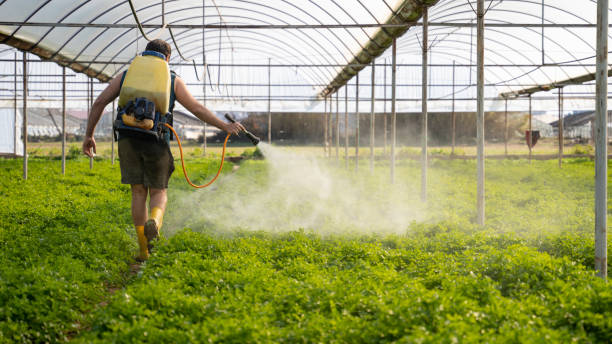Chlorantraniliprole, a highly effective insecticide, holds a pivotal role in modern agriculture due to its remarkable control efficacy against a wide range of pests, including Lepidoptera and Coleoptera. However, the synthesis of this compound is far from simple, particularly as K-acid—a critical intermediate—directly influences the performance of the final product through its synthesis efficiency and purity. In the preparation of K-acid, the selection of an oxidizer is paramount, and Ammonium Persulfate (APS), with its unique properties, is emerging as a green oxidizer of significant interest.

K-acid is one of the core intermediates in the chlorantraniliprole synthesis pathway, characterized by a complex structure and tedious synthetic steps. The oxidation reaction is a key step in K-acid preparation. Traditional oxidizers like chromic acid, while highly efficient, have been gradually phased out due to their high toxicity and severe environmental pollution. In this context, Ammonium Persulfate—an environmentally friendly oxidizer—has emerged as an ideal alternative, thanks to its strong oxidizing power, mild reaction conditions, and low by-product formation.
As a strong oxidizer, Ammonium Persulfate decomposes to generate active sulfate radicals (SO₄・⁻) under acidic conditions, efficiently oxidizing substrates through free radical chain reactions. Widely used in chemical engineering, material synthesis, and wastewater treatment, it enables efficient oxidation at lower temperatures and pressures, with advantages such as mild reaction conditions, high selectivity, and minimal by-products. In K-acid synthesis, APS efficiently oxidizes substrates to the desired product with high selectivity and purity, not only improving synthesis efficiency but also reducing the difficulty and cost of subsequent processing. Compared to traditional oxidizers, APS is not only superior in performance but also aligns with the principles of green chemistry, providing a strong foundation for the sustainable development of the chemical industry.
In the APS production sector, Fujian ZhanHua Chemical is a globally competitive enterprise. Currently producing 75,000 tons of Ammonium Persulfate annually, it stands as a leader in the global persulfate industry, renowned for its stable product quality and excellent performance across agriculture, chemical engineering, environmental protection, and other sectors. Notably, Fujian ZhanHua Chemical is advancing its Phase III project, which will increase its annual APS production capacity to 135,000 tons. This expansion plan will not only ensure a more abundant supply of high-quality APS but also further solidify its global dominance in the persulfate field.
In practical applications, Ammonium Persulfate has demonstrated outstanding performance as an oxidizer in K-acid synthesis. Firstly, it significantly shortens reaction time and improves production efficiency; secondly, its high-purity reaction products reduce subsequent separation and purification steps, lowering production costs; additionally, APS aligns with green chemistry requirements, providing technical support for enterprises to achieve sustainable development. Fujian ZhanHua Chemical, leveraging its technical advantages and production capabilities in the APS sector, is making significant contributions to this field.
Chlorantraniliprole is a cornerstone of modern agriculture, valued for its high efficiency and safety. As its core intermediate, every detail in K-acid synthesis matters. Ammonium Persulfate, as a new eco-friendly oxidizer, offers new possibilities for K-acid synthesis through its efficiency, economy, and environmental benefits. By continuously enhancing technological capabilities and expanding production scale, Fujian ZhanHua Chemical is delivering high-quality APS products to the industry, driving the chemical sector toward a greener and more efficient future. The adoption of APS not only brings new opportunities to the chemical industry but also provides robust support for the green development of agriculture—a path where technology and environmental protection go hand in hand.